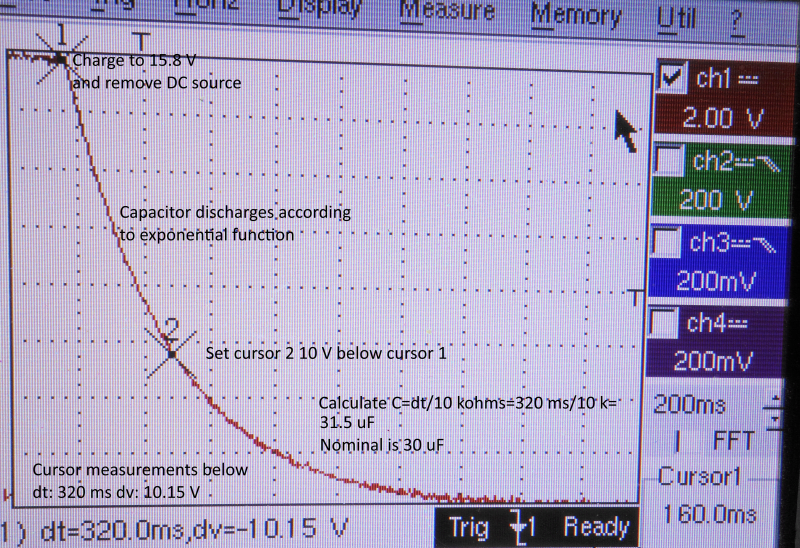You could do it with no risk if you just use the discharge resistor in an RC Circuit where the capacitor is the C. No extra connections, except for the measurement strips.
Use the old discharge formula u = U
pk*(1-exp(t/RC)) which says that voltage drops 63.2 % in one RC time constant.
For AC capacitors, you can go with low voltage and there will be no grenade problems and no non-linear problems like you could have with electrolytics.
Charge to 15.8 V DC (for reasons explained later). Remove DC and with the voltage drop. Measure time to 5.8 V and there is your RC time constant.
Value of R should be on the component, or you could measure it. It takes some time Before you get a valid Reading because the capacitor needs to be charge at the same time. Picture shows how to do it.
Cursor 1 is a little "too early", thence the 320 ms dt. Better adjustment would probably give a more correct answer.
Why 15.8 V? Simply because the voltage drop in one time constant then is 10 V. Any other value could, of course, be used. But needs more calculation.
Gunnar Englund
--------------------------------------
Half full - Half empty? I don't mind. It's what in it that counts.

